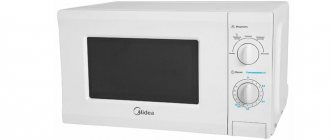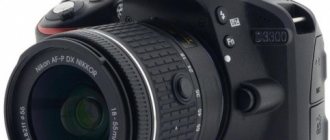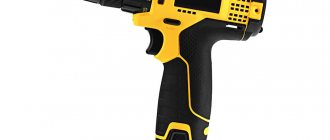What kind of radiation dosimeters measure?
Radiation is divided into different types of radiation, and its effects depend on strength and time. All these nuances are recorded by dosimeters, but in different ways.
Radiation is the process of emission of various elementary particles: protons, neutrons, electrons, photons, which destroy other atoms or molecules.
The type of radiation depends on the types of particles:
- Alpha is the radiation of heavy particles. It has a high degree of damage to biological tissues, but a low possibility of penetration.
- Beta has a high penetrating ability and can harm any living creature even tens or hundreds of meters from the radiation source. However, the level of harm caused will be average.
- Gamma - has high penetrating power and speed; it is difficult to stop even a thick layer of metal or concrete. But it does not cause serious harm to human bodies.
- X-rays - These rays act similar to gamma radiation, but are not as powerful. However, it has high penetrating power.
- Neutron radiation has a high penetrating ability, but can easily be protected from it by any material containing hydrogen. Has a strong damaging effect.
Household dosimeters most often measure radiation with high penetrating power: gamma or beta. There are dosimeters that also record alpha fluxes.
Alpha radiation is the most difficult to measure because it travels only a short distance from the source. It is measured 2-3 cm from the object. Such meters have a separate, additional sensor in the form of a window protected by a curtain.
Important! Alpha, beta and gamma types are the radiations that are most often found in everyday life and nature. Therefore, measuring them is most important.
X-ray radiation is not measured, since it is the least harmful. Professional devices can distinguish all types of radiation and record changes in their intensity.
Areas of application
A dosimeter and a radiometer are devices that are designed differently and have different operating principles. A dosimeter is used to determine the dose of radiation, and a radiometer is used to determine the level of activity of a radionuclide. Measurements can be carried out on various substances, regardless of their physical state. Therefore, control using a dosimeter is performed over solids, liquids, gases, aerosols (regardless of what forms the object of study takes)
The devices have a wide range of applications - they are used in any places and cases in which it is necessary to monitor the radiation situation. And also if there are suspicions that there is a danger of radiation contamination. Dosimeters are used to study the following objects:
- antiques, antiques;
- paper money, coins;
- building materials;
- structures, reinforced concrete structures, various houses and buildings;
- land;
- food products, animal feed;
- cargo, postal items;
- jewelry, jewellery;
- fertilizers;
- vehicles of different types, etc.
How measurements are made with a dosimeter
In addition to the type of radiation, the impact of radiation on a person depends on three more factors:
- Flow forces
- Duration of exposure
- Natural background
The essence of radioactive exposure is a flow of particles that are unstable and decay. In the process of decay, their remains either damage other particles or combine with it.
In any case, this leads to destabilization of all molecules and larger compounds. These particles are called radionuclides. They can accumulate in the body and cause harm for a long time over several years, even if the person has not been near the source of radiation for a long time.
That is why two parameters are measured at once. That is, if a person has been exposed to weak radioactive radiation, but for a long time, then the harm can be caused to him in the same way as if he had been subjected to strong radiation in a few minutes.
In nature, there are also natural, weak sources of radiation: the sun, minerals, gases. Together they should not exceed the norm of 30 microroentgens per hour or 0.3 microsieverts per hour.
Most dosimeters measure the intensity of radiation from some source. There are models that can additionally take into account the accumulated radiation for several people. The natural accumulated dose of radiation is 3-4 microsieverts per year or 300-400 microroentgens.
How is radiation measured?
Radiation is measured in different quantities depending on the characteristics of the radiation:
- Coulomb – indicates the power of radiation. 1 coulomb is equal to 3876 roentgens.
- Gray - indicates an absorbed dose of 1 Joule per 1 kg of mass.
- Rad is an international unit that also denotes absorbed radiation. 1 gray is equal to 100 rads.
- Sievert – brings different types of radiation to a common denominator. Since alpha, gamma and other types have different effects, for the convenience of accounting, sieverts bring them to a single denominator in terms of the degree of harm to health. 1 sievert is equal to 1 gray. However, only powerful radiation is measured in grays.
- X-ray shows the strength of radiation, but it cannot show what harm this or that radiation causes to health. Conventionally, 1 sievert is equal to 100 roentgens.
Most dosimeters measure radiation levels in roentgens, which means they indicate the strength of the radiation source. Expensive models display radiation in roentgens and sieverts.
Equipment
Built-in memory – allows you to save measurement data in the device’s memory.
Bluetooth – used to connect the device to a laptop, smartphone or tablet. This function allows you to transfer measurement results to these devices for processing and analysis.
Battery saving mode – increases the operating time of the device on a single charge.
Dust and moisture protection of the case - protects the device from the negative effects of the environment. It is designated as an IPXX code, where the first digit indicates the degree of protection against dust, the second - the degree of moisture protection. The most common options:
- IP20 – protection from objects measuring 12.5 mm or more, no protection from moisture;
- IP33 – protection against objects measuring 2.5 mm or larger, protection against splashes falling vertically or at an angle of up to 60° to the vertical;
- IP54 – dust-proof housing, protection against splashes falling in any direction.
The devices can be equipped with a clock, a flashlight, as well as temperature and atmospheric pressure sensors that record the corresponding parameters.
Types of dosimeters
Dosimeters are differentiated by the degree of complexity of the device. Some simply measure radiation levels, others can even analyze it.
Types of dosimeters:
- Indicators. These are simple devices that report a certain level of radiation. It is usually measured in microroentgens per hour. This is quite enough to check an object or area for increased levels of radiation. Of these devices, it is worth choosing dosimeters with the highest radiation measurement limit, since simple devices with a low measurement limit level, when it is reached, reset the counter to zero and show a zero level. Model options: Radiascan-701A, Radex 1706, household DKG-04D Grach.
- Alarms. They work the same way as indicators, but here you can set the upper radiation level at which a sound signal will sound. Such devices are usually used by stalkers or members of search teams. Product options: Terra, SIG-RM1208M device, Polimaster DKG-RM1621 meter.
- Meters. These are high-tech models with gas-discharge sensors that can measure changes in intensity and dose accumulated over time. Such models cost several hundred dollars. They are capable of detecting gamma, any types of beta and alpha radiation, for which they are equipped with different sensors. They show precise measurements in different radiations and units: roentgens and sieverts. Model options: Radex RD1008, Radex RD1009, MKS01SA1, MKS03SA1, MKS-08P.
- Search engines. These are the most sensitive models used by employees in radiation-related fields. These products are practically not needed in everyday life. These devices primarily detect gamma or beta radiation. Their feature is high sensitivity even to weak sources.
SOEKS (Soeks) Ecovisor F3
The average price is 8,500 rubles.
Dimensions – 147×54×21 mm
A good quality device will measure not only the radiation level, but also the nitrate component in vegetables and fruits and the quality of the water consumed. Able to calculate annual and monthly radiation dose.
The dosimeter is equipped with a miniature Geiger counter SBM-20-1. A composite probe allows you to measure indicators at several points at once. Works on both rechargeable batteries and AAA batteries.
- 3 in 1 – radioactive radiation, nitrate level, water hardness;
- easy to use;
- compactness;
- frequent firmware updates.
- measurement errors;
- Buttons may become stuck over time.
What to look for when choosing
When asked how to choose a dosimeter, several important nuances should be taken into account:
- Type of sensor. The most accurate and at the same time popular option is a gas-discharge Geiger-Muller counter. Cheap and insensitive detectors are based on semiconductors.
- Types of radiation. It is better if the device captures the most common types: alpha, beta and gamma. It is important to clarify how the measurements will be displayed. For example, Radex models display beta and gamma rays simultaneously on the display, and to measure alpha radiation you need to switch the mode.
- Measurement error. For household appliances it is acceptable at 25-30%. Industrial devices allow an error of no more than 7%.
- Range of values. The minimum level must be at least 0.05 microsieverts/hour. The maximum should not be lower than 10,000 microroentgen/hour or 100 microsievert/hour.
- Mark on checking the device. It is carried out at the manufacturing plant, which is indicated in the passport. This indicates that the device is working properly. There is no other way to check the functionality of the device, since the radiation is invisible.
Even simple household dosimeters will help determine the level of radiation from building materials, old watches or other devices with radioactive components and protect yourself.
RADEX MKS-1009
The average price is 25,600 rubles.
Dimensions: 140×71×34 mm
Professional household dosimeter-radiometer from a leading Russian company. It is listed in the State Register of Measuring Instruments under No. 55470-13. Capable of almost instantly determining the power of Gamma and Beta radiation.
Can take into account Alpha particles. Equipped with two sensors – Beta 2 and 2M. It has a unique continuous operation time on one AA battery – 950 hours.
- high-precision measurement;
- intercheck interval – 2 years;
- detailed instructions;
- registered in the State Register.
- high price;
- no connection to PC.











